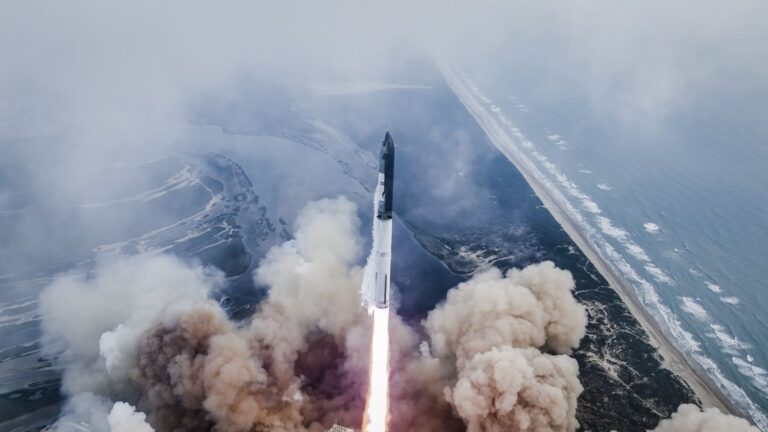
[ad_1]
The incredible power SpaceX’s Starship megarocket can be visualized in a new video of the rocket’s third test flight.
On March 14, SpaceX’s massive Starship vehicle — the world’s largest and most powerful rocket — lifted off from the company’s manufacturing and test launch facilities near Boca Chica Beach at 9:25 a.m. EDT (1325 GMT). During the launch, shock waves propagate from the rocket in a stunning new slow motion video.
Large clouds of smoke billowed out around the two-stage spacecraft, consisting of the reusable Starship cruise vessel mounted atop its Super Heavy rocket booster, as it lifted off the ground. Traveling faster than the speed of sound, the 400-foot tall (122 meters) rocket sent shock waves through the air as it accelerated skyward.
Related: Relive SpaceX Starship’s 3rd flight test in breathtaking photos

The launch, designated Integrated Flight Test-3 (IFT-3), represents the third test mission for the fully stacked Starship. Although neither the Starship vehicle nor its Super Heavy booster survived all the way through to their intended splashdown, the spacecraft achieved several of its key goals during the flight, including reaching orbital speed for the first time.
The Super Heavy rocket booster is powered by 33 first-stage Raptor engines, which ignite in a fiery blaze in the slow-motion video. The booster successfully separated from the rocket’s 165-foot-tall (50 m) upper-stage about 2 minutes 45 seconds after liftoff. However, Super Heavy’s engines did not relight as planned for its landing burn above the Gulf of Mexico, leading to the loss of the booster.
After separation, Starship’s upper stage entered a suborbital coast phase as it soared above Earth, demonstrating the first test of the spacecraft’s ability to open and close its payload door in orbit, along with the transfer of super-cooled rocket propellant from one tank to another during spaceflight. However, SpaceX lost contact with Starship during reentry.
Despite the loss of both the Starship vehicle and its Super Heavy booster, the spacecraft exceeded its past two test flights, IFT-1 and IFT-2, which were both cut short by explosions minutes after launch.
SpaceX has shared plans to conduct at least six more test flights of Starship this year, with the next test slated to take place as soon as May, pending regulatory approval following the investigation of IFT-3.
[ad_2]